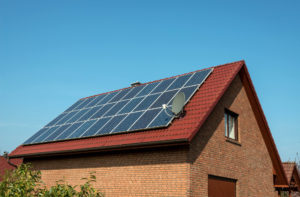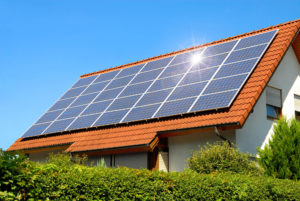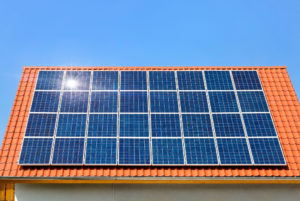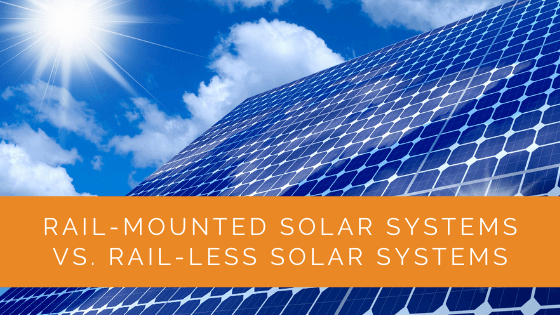In the world of solar energy, mounting solar panels is a critical decision that impacts both the efficiency and aesthetics of your solar setup. “Rail-mounted Solar Systems vs. Rail-less Solar Systems” explores two prevalent methods of installing solar panels on rooftops. Rail-mounted systems, known for their sturdy bases and adaptability, contrast with the sleeker, low-profile rail-less systems. This article offers an in-depth comparison, covering everything from the basic workings of each system, their benefits and drawbacks, to practical considerations like maintenance needs and cost implications. Whether you’re a homeowner looking to embrace solar energy or simply curious about the mechanics behind these systems, this article provides valuable insights to help you understand which solar mounting solution best aligns with your needs and preferences.
Contents
- 1 Key Takeaways
- 2 What Is A Rail Mounted System?
- 3 What Is A Rail Less System?
- 4 Similarities Between The Two Systems
- 5 Disadvantages Of Both Systems Separately
- 6 Factors To Consider Before Mounting Solar Panels
- 7 Case Study: Choosing the Right Solar Mounting System for a Residential Home
- 8 Expert Insights From Our Solar Panel Installers About Rail-mounted Solar Systems vs. Rail-less Solar Systems
- 9 Frequently Asked Questions
- 10 Experience Solar Excellence with Us!
- 11 Summing Up
Key Takeaways
- Rail-mounted solar systems provide a sturdy base for panels, offer flexibility, and compatibility with various panel types, making them a popular choice for rooftop solar projects.
- Rail-less solar systems are low-profile, aesthetically pleasing, and lightweight, making them suitable for older buildings; however, they may be limited to darker PV modules with lower capacity.
- Both systems integrate easily with rooftops and inverters, but professional installation is essential for both, and the choice depends on factors like load capacity and aesthetic preferences.
What Is A Rail Mounted System?
Solar panels are roof attachments that convert the sun’s energy into electricity. Rail mounting is the most widely used method as it provides a sturdy base to the panels.
In this mounting method, rails are the main components on an existing rooftop. These rails are generally made from the following raw material.
- Aluminium
- Galvanized Metal
- Stainless steel
The material of these rail mounts depends on the manufacturer’s suggestions and system designs.
Standard Rail Mounting Working
Railed systems eliminate the requirement of excessive drilling on the house or commercial building roof.
The metal rails are fixed to the roof using screws or bolts of adequate sizes. The solar panels slide on the rail tracks, allowing high slope adjustability. A railed system allows clearance between the existing rooftop and solar panels. Hence, you can clean the rail system easily.

Benefits Of A Rail Mounting System
A typical railed system is convenient and installable on different types of roofs. Also, you can opt for any of the following subtypes depending on the requirement.
- Fixed tilt rail mount
- Adjustable tilt rail mount
- Multi-axis rail system
Apart from the flexibility in this solar mounting system, here are some widely known advantages.
- Compatibility with different capacity solar panel modules
- Suitable color options of standard rail
- Choice of flashing for blending
- The proper installation presents a high probability of solar system success
A rail-mounted solar system is compatible with almost any kW module panel. Hence, it is a popular rooftop solar project choice.
What Is A Rail Less System?
Rail less system is a low-profile mounting method where panels are installed on rooftops directly. This system needs multiple attachment points to connect the solar panels individually.
Rails add additional weight to the rooftop. This issue is eliminated in a rail-less solution. It is advisable to have lucrative house roof warranties before choosing rail-less systems.
Similar to rail mounting systems, manufacturers offer flashing in this installation process. Hence, you do not have any problem with rodents.
Standard Rail Less System Working
Rail-less racking solutions use fewer components. The solar panels are drilled using suitable techniques. Consequently, you can hide all the wiring and cable attachments underneath the panels.
However, a rail-less mounting system leads to holes in your rooftop. So, if installed improperly, you can face water damage.
There are fewer experienced installers for rail-less solar systems.
Benefits Of A Rail Less Solar System
These mounting systems meet the customer’s aesthetic perfectly. They are less noticeable and offer the following advantages.
- The design is flat and sleek
- Overall system cost is less (However, the price variation is a few cents per kW)
- The weight of the system is low
- You can conceal the electrical cables under the module frame
Remember to make your roof watertight before installing rail-less systems. Notably, rail-less mounts are suitable for older buildings and houses.
Similarities Between The Two Systems
Before moving on to the limitations of each mounting system, it is vital to understand what you receive in common.
Subtle Integration With Rooftops
Both these mounting systems typically support existing or new roof installation. So, you can integrate the rails or their absence at any time.
So, there is no need to worry about choosing a solar racking system depending on the building’s construction status.
Easy Integration With Inverters
Both these systems integrate with solar inverters similarly. So, you do not spend or invest a higher amount in connecting the solar inverter in either of the mounting systems.
This factor leads to quicker installation and decision-making during rooftop solar projects.
Requirement Of Professional Installation
You cannot save money by installing solar panels as a DIY method. The angle, structure, and support components need expert intervention in terms of railed systems.
In the case of a rail-less solar system, the experts drill the solar panel individually, requiring precise calculations. Hence, both mounting systems need professional installers.

Disadvantages Of Both Systems Separately
Both rail-mounted solar systems and rail-less types suit the requirements of different users. The main factors or components that distinguish between the two are as follows.
- Attachment points
- Need of support component
- Requirement of darker module types
- Popularity in application
So, choosing a railed or rail-less solar mounting depends on what a user desires from the installation rail systems.
Cons Of Rail Mounting Solutions
- The additional load on the roof of the building structure
- The panels and solar system looks prominent (a couple of inches)
- Flashing is required for long term durability
Cons Of Rail-less Mounting Solutions
- Compatible only with darker module types
- Limitation of comparatively fewer product manufacturers
- The roof is subjected to drilling and may hamper water resistance and strength
Considering all the mentioned aspects, contacting a solar installer with in-depth knowledge about the mounting methods is better.
You can avoid the higher risk of an installation problem. Also, expert solar installers suggest the best mounting method, dependent on your house structure.
Factors To Consider Before Mounting Solar Panels
These factors relate specifically to the mounting system selection for installing solar panels on your rooftop solar project.
Need Of Maintenance
Periodic maintenance of standard roof vents or rooftops is necessary. Roof material is prone to weather damage and the impact of dust.
Irrespective of the roof types, you should easily access the area for cleaning and maintenance. In such a case, the standard rail mounting system proves handy.
You can clean the rooftop by accessing the gap between the rails and roof. In the case of a rail-less solar system, you need to remove the solar panels.
Ease Of Installation
A rail-mounted system is easy to install as you do not need to attach each panel individually. Installers can complete the entire process at a brisk pace.
However, rail systems without tracks need precise drilling, layering, and other technical inclusions. Hence, these systems are comparatively challenging to install.
Overall, rail-mounted installation is popular due to its simplicity.
Overall Costs
This factor is negligible as both systems nullify the overall cost. Generally, the mounting system’s price ranges to a very small proportion of the entire solar module.
For rail mounting systems, the additional components of rails lead to higher material costs. In the case of the rail-less solar installation process, special expertise demand high labor costs.
Hence, both systems have a similar price structure. Still, you will realize rail-mounted solar to be more convenient for practical purposes.

Case Study: Choosing the Right Solar Mounting System for a Residential Home
Maximizing Solar Efficiency with the Right Mounting System: A Homeowner’s Journey
Background
John and Lisa, homeowners in Phoenix, Arizona, decided to install a solar energy system to reduce their electricity bills and their carbon footprint. With a spacious roof and a budget for a medium-sized solar project, they wanted to make an informed decision about the best mounting system for their needs. They consulted Solar Panels Network USA to explore their options.
Objective
The primary objective was to determine whether a rail-mounted or rail-less solar system would be more suitable for their home. Key considerations included aesthetics, installation cost, efficiency, and long-term maintenance.
Analysis and Consultation
During the consultation, Solar Panels Network USA’s experts provided John and Lisa with detailed information on both mounting systems:
Rail-Mounted System
- Advantages: High durability and flexibility, suitable for various roof types, easier to adjust and maintain.
- Disadvantages: More visible structure on the roof, slightly higher installation costs due to additional materials.
Rail-Less System
- Advantages: Sleek, low-profile appearance, lighter weight making it suitable for older roofs.
- Disadvantages: Requires precise installation to avoid roof damage, limited to specific types of solar panels.
Decision-Making Process
John and Lisa prioritized a balance between aesthetics and performance. They were particularly concerned about the visibility of the solar panels from the street and their home’s curb appeal.
- Aesthetic Concerns: The rail-less system’s sleek design appealed to their desire for a less obtrusive installation, but the color-matched rails of the rail-mounted system helped mitigate aesthetic concerns.
- Performance and Maintenance: The ease of maintenance and flexibility in panel adjustment were significant advantages for the rail-mounted system. Though low-profile, the potential challenges in maintenance and higher risk of roof damage were deterrents for the rail-less system.
- Cost Considerations: Both systems had comparable overall costs when considering long-term maintenance and installation specifics.
Installation and Results
John and Lisa ultimately chose the rail-mounted system for its durability, ease of maintenance, and flexibility. Solar Panels Network USA installed a 6kW system using high-efficiency monocrystalline panels on a fixed tilt rail mount. The installation was completed in two days, and the rails were color-matched to blend with their roof.
Results
- Energy Efficiency: The system met and exceeded their energy needs, significantly reducing their monthly electricity bills.
- Aesthetic Satisfaction: The rails were less obtrusive than expected, and the overall look was clean and professional.
- Maintenance: The system has required minimal maintenance, and any cleaning or adjustments have been straightforward.
Summary
John and Lisa’s case demonstrates the importance of balancing aesthetic preferences with practical considerations like maintenance and performance. By choosing a rail-mounted system, they achieved a reliable, efficient, and visually acceptable solar installation that meets their energy needs and enhances their home’s value.
This case study highlights the value of consulting with solar experts to make informed decisions tailored to individual circumstances and preferences.
Expert Insights From Our Solar Panel Installers About Rail-mounted Solar Systems vs. Rail-less Solar Systems
On Rail-mounted Solar Systems
As a seasoned solar installer, I’ve found that rail-mounted systems are incredibly versatile and reliable. Their ability to accommodate various roof types and their sturdiness make them a preferred choice for many homeowners. The flexibility in adjusting the tilt and the clearance they provide for cleaning and maintenance are significant advantages. We’ve completed numerous installations using rail-mounted systems, and they consistently deliver high performance and durability.
On Rail-less Solar Systems
Rail-less solar systems are fantastic for those looking to maintain a sleek, low-profile appearance on their rooftops. In my experience, they are particularly well-suited for older buildings where additional weight from rails might be a concern. While they require precise installation to avoid water damage, their aesthetic appeal and reduced weight make them an excellent option for clients prioritizing the look of their solar setup.
Practical Considerations
Choosing between rail-mounted and rail-less systems often comes down to specific project requirements and customer preferences. Rail-mounted systems offer robustness and ease of maintenance, whereas rail-less systems provide a modern, streamlined look. As professionals, we ensure that both systems are installed to the highest standards, taking into account factors like roof structure, load capacity, and long-term performance to recommend the best solution for each unique situation.
Frequently Asked Questions
Here are some common queries regarding PV mounting systems.
Is ground-mounted solar less costly?
Compared to rooftop systems, ground-mounted solar panel systems need more installation costs. These systems require expert installers, increasing the labor cost.
In addition, you require special permission to mount solar panels on the ground. Hence, they cost comparatively high in the long run.
What is the typical length of solar rail?
The length of solar rails depends on the PV module size. They need to support the panels without losing their strength.
Generally, you will observe solar rails above 4000 mm in the market. Also, the gap between the two rails should be at least five inches.
Hence, the installer can also use shorter solar rails depending on the rooftop space.
Is an air gap necessary for solar panels?
Solar panels become less efficient at high temperatures. The gap between the roof surface and panel allows sufficient ventilation.
The circulating air helps dissipate heat. Hence, the panels offer better service life. However, an air gap isn’t mandatory.
Experience Solar Excellence with Us!
Trust in Solar Panels Network USA, where our seasoned experts deliver top-quality solar solutions for homes and businesses nationwide. With a legacy of countless successful installations and a commitment to sustainable energy, we’re your reliable partner in the solar journey. Ready for a brighter, eco-friendly future? Call us now at (855) 427-0058 and harness the power of the sun!
Summing Up
The choice between the two systems is simple. A rail-mounted system is the best choice if your building or house can take an additional load.
On the other hand, if aesthetics and low weight are your major preferences, opt for rail-less systems. However, you will be constrained by darker PV modules with low kW capacity.
Convenience and a high number of installers make rail-mounted systems popular. So, these mounting systems offer more benefits compared to rail-less solutions.
About the Author
Solar Panels Network USA stands at the forefront of solar energy solutions, driven by a team of seasoned solar engineers and energy consultants. With over decades of experience in delivering high-quality solar installations and maintenance, we are committed to promoting sustainable energy through customer-centric, tailored solutions. Our articles reflect this commitment, crafted collaboratively by experts to provide accurate, up-to-date insights into solar technology, ensuring our readers are well-informed and empowered in their solar energy decisions.

